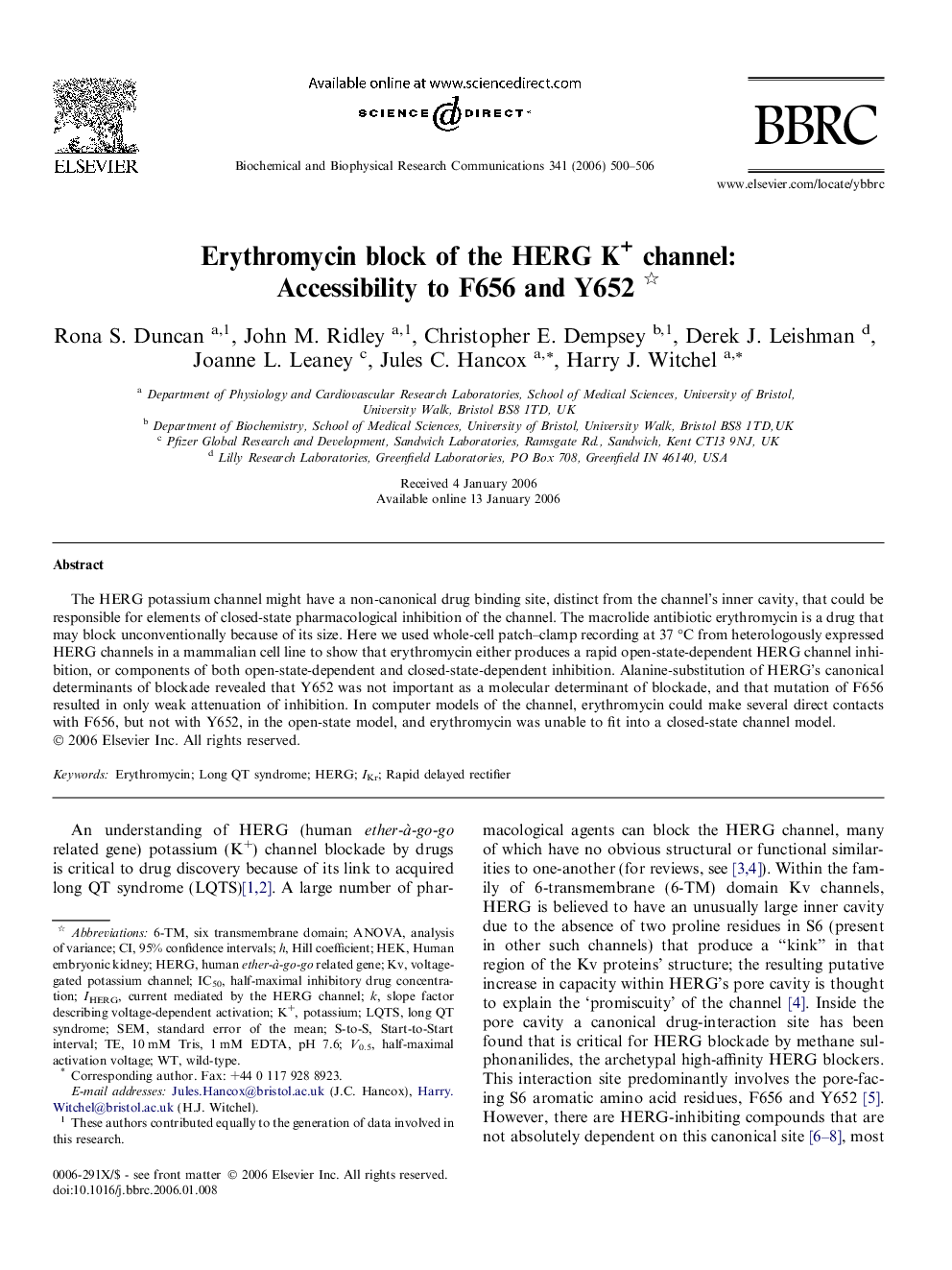| Article ID | Journal | Published Year | Pages | File Type |
|---|---|---|---|---|
| 1940416 | Biochemical and Biophysical Research Communications | 2006 | 7 Pages |
The HERG potassium channel might have a non-canonical drug binding site, distinct from the channel’s inner cavity, that could be responsible for elements of closed-state pharmacological inhibition of the channel. The macrolide antibiotic erythromycin is a drug that may block unconventionally because of its size. Here we used whole-cell patch–clamp recording at 37 °C from heterologously expressed HERG channels in a mammalian cell line to show that erythromycin either produces a rapid open-state-dependent HERG channel inhibition, or components of both open-state-dependent and closed-state-dependent inhibition. Alanine-substitution of HERG’s canonical determinants of blockade revealed that Y652 was not important as a molecular determinant of blockade, and that mutation of F656 resulted in only weak attenuation of inhibition. In computer models of the channel, erythromycin could make several direct contacts with F656, but not with Y652, in the open-state model, and erythromycin was unable to fit into a closed-state channel model.
